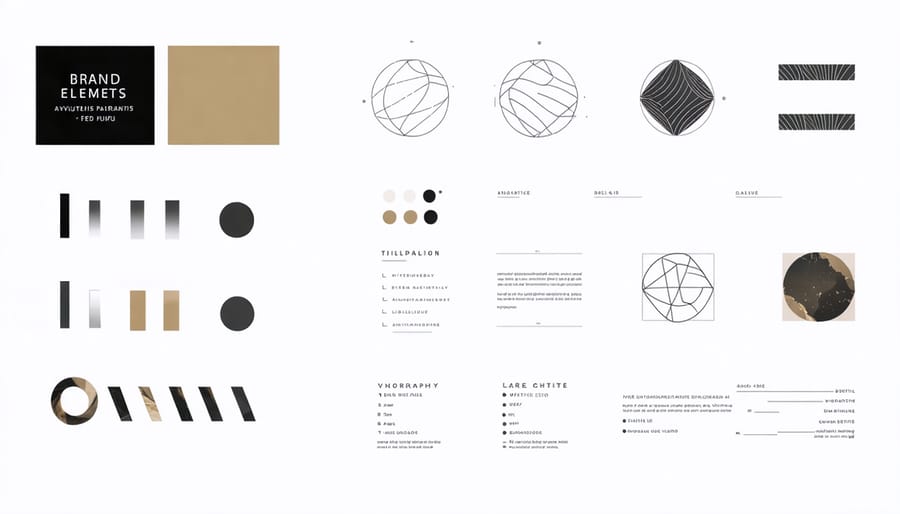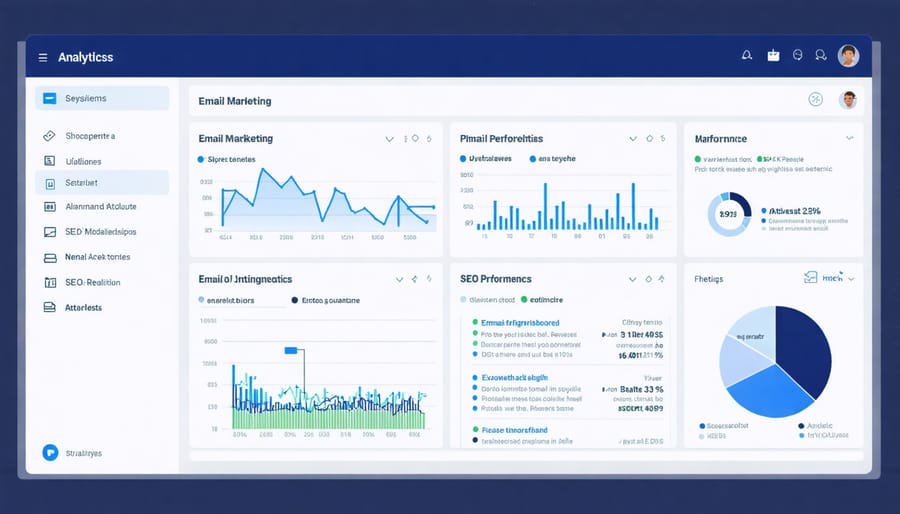
Digital mastery transforms modern entrepreneurs from content consumers into influential creators. Developing modern entrepreneurship skills now requires fluency in digital tools, platforms, and communication strategies that evolve daily. Gone are the days when basic computer literacy sufficed – today’s digital landscape demands sophisticated understanding of content creation, data analytics, and online community building.
Learning digital literacy isn’t just about staying current; it’s about gaining a competitive edge in an increasingly virtual marketplace. From crafting compelling social media narratives to analyzing customer behavior through data insights, these skills form the foundation of successful online entrepreneurship. Whether you’re launching a lifestyle blog, building a personal brand, or scaling an existing business, mastering digital literacy opens doors to opportunities that simply didn’t exist a decade ago.
The real power of digital literacy lies in its ability to democratize business success. With the right knowledge and tools, entrepreneurs can reach global audiences, automate routine tasks, and create meaningful connections with their target market – all while maintaining the flexibility and freedom that modern business owners crave. This transformation begins with understanding the fundamental principles of digital communication and strategic online presence.

Essential Digital Tools for Today’s Lifestyle Entrepreneurs
Content Management Systems
Remember when website creation meant wrestling with complex code? Those days are behind us! As someone who started with zero tech knowledge, I’m excited to share how Content Management Systems (CMS) have revolutionized the way we create and manage websites. These user-friendly platforms are essential digital tools for business that make website management a breeze.
Popular platforms like WordPress, Wix, and Squarespace offer intuitive drag-and-drop interfaces that feel more like arranging furniture in a room than building a website. You can easily update text, add images, and organize your content without touching a single line of code. I particularly love how these platforms come with pre-designed templates that you can customize to match your brand’s personality.
Think of a CMS as your digital command center – it’s where you’ll create blog posts, update your portfolio, or manage your online store. The best part? Most systems include built-in features for SEO optimization, social media integration, and analytics tracking. This means you can focus on creating meaningful content while the platform handles the technical details.
For beginners, I recommend starting with a simple platform like Wix or Squarespace. As your confidence grows, you might want to explore WordPress, which offers more flexibility and customization options. Remember, the goal is to find a system that feels comfortable and allows you to express your creativity without technical barriers.
Social Media Management Tools
Managing multiple social media accounts can feel overwhelming, but I’ve discovered that having the right tools makes all the difference! Let me share some game-changing platforms that have transformed how I handle social media.
Buffer and Hootsuite are my go-to favorites for scheduling posts across different platforms. They’re like having a personal assistant who ensures your content goes live at the perfect time, even when you’re busy with other tasks. I particularly love how Buffer shows the best posting times based on when your audience is most active.
For visual content, Canva has been an absolute lifesaver. Its user-friendly interface and beautiful templates make creating professional-looking graphics a breeze, even if you’re not design-savvy. Another gem is Later, which is fantastic for planning and previewing your Instagram feed – perfect for maintaining that cohesive aesthetic we all love!
To track performance, I rely on tools like Sprout Social or Agorapulse. They provide detailed analytics that help you understand what content resonates with your audience. Trust me, once you start using these insights to guide your strategy, you’ll notice a significant improvement in engagement.
Don’t forget about content curation tools like Feedly or BuzzSumo. They help you stay on top of trending topics and find shareable content that your audience will love. Remember, it’s not just about posting your own content – it’s about being a valuable resource for your community.
Building Your Digital Brand Identity
Visual Branding Tools
Let me share something that transformed my digital presence: discovering the power of consistent visual branding. When I first started creating content, my visuals were all over the place, but once I established a cohesive look, engagement skyrocketed!
Creating professional-looking visual content doesn’t require a design degree. Start with user-friendly tools like Canva or Adobe Express, which offer templates and brand kit features to maintain consistency across all your materials. These platforms come with preset color palettes and font combinations that take the guesswork out of design decisions.
Speaking of colors and fonts, pick 2-3 main colors and stick to them. I recommend choosing one primary color that reflects your brand’s personality, along with two complementary colors for accents. For fonts, select a clear heading font and a readable body text font – less is definitely more here!
Templates are your best friends for maintaining visual consistency. Create master templates for different content types: social media posts, blog headers, presentations, and email graphics. This not only saves time but ensures your content is instantly recognizable to your audience.
Don’t forget about image libraries like Unsplash or Pexels for high-quality stock photos that align with your brand aesthetic. Pro tip: create a collection of go-to images that match your color scheme and style, so you’re never scrambling for visuals at the last minute.
Remember to keep your branding elements organized. I use a simple spreadsheet to track my brand colors (with hex codes), fonts, and commonly used design elements. This makes it super easy to maintain consistency, even when you’re creating content on the go.

Content Planning and Creation
Let me share a quick story: When I first started creating digital content, my desk was covered in sticky notes with random ideas, and my computer folders were a maze of half-finished drafts. Sound familiar? Creating digital content doesn’t have to be this chaotic – let’s talk about how to make it manageable and fun!
Start by developing a content calendar that works for you. Think of it as your digital roadmap. I like using tools like Trello or Google Calendar to map out topics and deadlines, making sure everything flows naturally. Remember, quality beats quantity every time!
When planning your content, consider these three essential elements: your audience’s needs, your expertise, and current trends. For example, if you’re a lifestyle blogger, you might blend seasonal topics with evergreen content that resonates year-round.
Here’s a simple content creation process I swear by:
– Research and gather inspiration (but avoid copying others!)
– Create an outline with key points
– Draft your content in a clear, conversational tone
– Add visuals that enhance your message
– Edit thoroughly, focusing on clarity and flow
– Schedule and promote strategically
Don’t forget to organize your digital assets effectively. Create a logical folder structure for your images, documents, and videos. I learned this the hard way after spending hours searching for that “perfect photo” I knew I had somewhere!
The key to successful content planning is finding a system that feels natural to you. Start small, be consistent, and adjust your approach as you learn what works best. Remember, even the most polished content creators started exactly where you are now!

Digital Marketing Essentials
Email Marketing Fundamentals
Let me share a little secret from my early days of digital marketing – I used to think email newsletters were outdated until I saw how they transformed my own business! Email marketing remains one of the most effective digital marketing strategies, and getting started is simpler than you might think.
First, choose an email service provider that feels right for you. Popular options like MailChimp or ConvertKit offer user-friendly interfaces and free starter plans perfect for beginners. Think of it as setting up your digital home base – you want it to be comfortable and easy to navigate.
Start building your email list organically. Create a compelling lead magnet – perhaps a helpful checklist, mini-guide, or exclusive content that your audience would love. Place sign-up forms strategically on your website, and remember to clearly communicate the value your subscribers will receive.
When crafting your newsletters, think of them as conversations with friends. Keep your subject lines engaging but honest (no clickbait, please!), and maintain a consistent sending schedule. Whether it’s weekly updates or monthly roundups, reliability builds trust with your audience.
Segment your email list based on subscriber interests and behaviors. This allows you to send more targeted, relevant content to different groups. For instance, new subscribers might receive a welcome series, while long-time readers get exclusive content.
Remember to make your emails mobile-friendly – most of us check our phones first thing in the morning! Include clear calls-to-action, but don’t overwhelm your readers. One primary goal per email is often most effective.
Track your results through open rates, click-through rates, and conversions. These metrics tell you what resonates with your audience, helping you refine your strategy over time. Don’t be afraid to experiment with different formats and content types – your audience will let you know what works best!
SEO Basics for Lifestyle Blogs
I remember when I first started my lifestyle blog, SEO felt like a mysterious code I needed to crack. But here’s the thing – it doesn’t have to be complicated! Let’s break down some simple SEO techniques that can help your content shine in search results.
First, let’s focus on keywords. Think about what your readers might type into Google when looking for content like yours. For example, if you’re writing about indoor plant care, they might search for “easy houseplants for beginners” rather than just “plants.” Use these natural phrases throughout your post, especially in your title, first paragraph, and headings.
Headlines are your first impression – make them count! Include your main keyword while keeping it catchy and clear. Instead of “My Plant Journey,” try “5 Easy Houseplants That Transformed My Living Space.” This tells both readers and search engines exactly what to expect.
Images deserve love too! Before uploading those beautiful photos, rename them with descriptive file names (like “monstera-deliciosa-care-guide.jpg” instead of “IMG12345.jpg”). Don’t forget to add alt text describing what’s in the image – this helps with accessibility and SEO.
Meta descriptions are like your blog post’s elevator pitch. Write a compelling 150-160 character summary that includes your keyword and makes readers want to click. Think of it as a tweet about your post!
Internal linking is your secret weapon. When you mention topics you’ve covered before, link to those posts naturally. This helps search engines understand your site structure and keeps readers engaged longer.
Remember to write for humans first, search engines second. Focus on creating valuable, engaging content that answers your readers’ questions. The best SEO strategy is one that feels natural and enhances your readers’ experience rather than disrupting it.
Finally, keep your paragraphs short and use subheadings to break up text – this makes your content more scannable and SEO-friendly. Just like we’re doing right here!
As we wrap up our journey through digital literacy, remember that this isn’t a destination but an ongoing adventure. The digital landscape evolves daily, bringing new tools, platforms, and opportunities for growth. Just like I discovered when I first started blogging, every small step forward in your digital education opens doors to exciting possibilities.
The beauty of digital literacy lies in its accessibility. You don’t need to master everything at once – start with what feels most relevant to your current needs. Maybe that’s learning to create engaging social media content, understanding basic SEO, or mastering a new productivity app. The key is to begin somewhere and build your confidence gradually.
I’ve seen countless women transform their personal and professional lives through digital literacy. Take Sarah, a member of our community, who started with basic email marketing skills and now runs a successful online business. Or Maria, who learned to navigate digital tools during the pandemic and now teaches others in her local community.
Remember to stay curious and open to learning. Set aside regular time for updating your digital skills, whether it’s watching tutorial videos, joining online communities, or practicing with new tools. Consider it an investment in yourself and your future opportunities.
Don’t be afraid to make mistakes – they’re valuable learning opportunities. The digital world is forgiving, and most actions can be undone or corrected. Share your journey with others, ask questions, and celebrate your progress, no matter how small it might seem.
As you continue your digital literacy journey, focus on building sustainable habits rather than rushing to learn everything at once. Stay informed about digital safety, keep exploring new tools, and most importantly, enjoy the process of becoming more digitally empowered. Your future self will thank you for starting this journey today.



